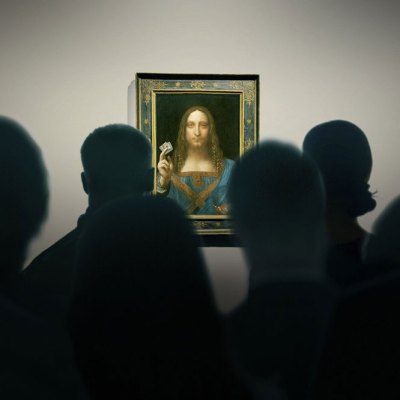Anthony McCoy is an artist and his girlfriend Brianna is a successful gallerist. Together they live in an enviable apartment in a luxurious new development in Chicago, on the site of the demolished Cabrini-Green housing projects. McCoy was regarded as a rising star in the art world, but his ascent has stalled. When Brianna’s brother relates a macabre tale about Cabrini-Green, and a white sociologist called Helen Lyle, Anthony is inspired to investigate the neighbourhood’s infamous past.
The Lyle story connects to a more venerable local myth: that of the Candyman, a hook-handed killer who can be summoned by saying his name into a mirror five times. Anthony visits the vestiges of Cabrini-Green, feeling increasingly drawn to the story of the Candyman. He starts to create work drawing on the urban legend. Bad things begin to happen.
Teyonah Parris as Brianna Cartwright in Candyman (2021; dir. Nia DaCosta). © 2020 Universal Pictures and MGM Pictures. All Rights Reserved

Nia DaCosta’s Candyman – produced by Jordan Peele, of Get Out (2017) fame, and written by DaCosta, Peel and Win Rosenfield – is a film heavily aware of its own myths. It is not strictly a reboot of Bernard Rose’s Candyman (1992), but a ‘spiritual successor’ to the cult classic, a sequel that works as a stand-alone, with Tony Todd returning as the mirror-dwelling slasher. Helen Lyle’s story, related in the 1992 film, gets layered into the sediment of whispered urban rumour, which Anthony (played by Yahya Abdul-Mahteen II) stirs up. The projects that Lyle visited have been scoured away, their slab blocks pulled down, and only a couple of streets of depopulated, semi-ruined rowhouses remain, which Anthony explores and photographs. He meets William (Colman Domingo), a longtime resident of the projects, whose launderette is now flanked by a yoga studio and an artisanal coffee joint. Shining apartment buildings are rising from the scorched earth all around.
There’s a stronger relationship between the property market and the horror story than might be imagined. Hauntings, curses and so on are locational more often than they are personal. They are a form of blight, just as blight is a kind of haunting or curse. In Candyman, the whole neighbourhood is haunted by cycles of past violence; the ‘Candyman’ whom William knew was a Black man wrongly accused of putting razorblades in sweets, and murdered by police. Anthony and Brianna (Teyonah Parris), as model residents of an amnesiac new district with a new name, are already unknowing participants in a kind of urban exorcism that will expunge all this regrettable history, and turn a tidy profit for condo builders into the bargain. Anthony’s growing fascination with the former project seems to relate to unease about its fate, its residents decanted, its streets pacified, its buildings demolished.
Yahya Abdul-Mateen II as Anthony McCoy in Candyman (2021; dir. Nia DaCosta). © 2020 Universal Pictures and MGM Pictures. All Rights Reserved

Artists are often the shock troops of gentrification, moving in while a neighbourhood is cheap and making it fashionable. This is not an original observation: it’s been noted since at least the 1960s, and was explored in detail by Sharon Zukin in Loft Living (1982) and Neil Smith in The New Urban Frontier (1994). (My novel Plume, published in 2019, satirises the phenomenon.) When a critic, unimpressed with Anthony’s first Candyman-related piece, puts the accusation to him, she does so with brutal detachment, as if it hardly needs saying. Nevertheless, Anthony is shaken. Say My Name, the artwork the critic dismisses as didactic and cliched, is a mirror that opens to reveal a hidden space containing images of violence, with an accompanying text explaining the Candyman incantation. Inevitably, people take up the invitation of Say My Name and the hooks start slashing.
At this point, the film Candyman might sound a little didactic, too, with all its themes neatly laid out in the first act. Maybe it is, a little – it’s certainly impatient with subtext; you don’t need a decoder ring to understand the contemporary significance of a title like ‘say my name’, coupled with images of police brutality. Instead, the film is propelled by a ghastly and resonant sense of inevitability, the powerful and dreadful beat of a pattern unstoppably repeating itself. It convinces with DaCosta’s lush visuals – including a framing device of shadow puppetry – and Abdul-Mahteen II’s affecting portrayal of the disintegrating artist.
Candyman, in silhouette, in Candyman (2021; dir. Nia DaCosta). © 2020 Universal Pictures and MGM Pictures. All Rights Reserved

The Candyman himself emerges as a kind of golem, a manifestation of a tortured community obliged to repeatedly undergo the same pain. (He was always a surprisingly sympathetic monster.) In the book Darkly: Black History and America’s Gothic Soul (2019), Leila Taylor discusses Rose’s original film, explaining that it drew on a true story from 1987: that of a woman called Ruth Mae McCoy, resident in a Chicago housing project, who was murdered by someone able to enter her apartment via the bathroom cabinet, owing to a maintenance space behind the walls. ‘The moral of her story is,’ Taylor writes, ‘if the Candyman won’t get you, poverty, systemic racism, indifferent law enforcement, and underfunded public service will.’
DaCosta returns to the scene of that social crime and visits the survivors. Central to her film is Anthony’s trilemma as an artist: either to forget and betray a painful past, or to sanitise and commodify it for a well-heeled audience, or to engage with it deeply and risk being engulfed. It’s not hard to see this as DaCosta’s own quandary, expressed in this artful and intelligent slasher.
Candyman (2021; dir. Nia DaCosta) is now in cinemas in the UK.



